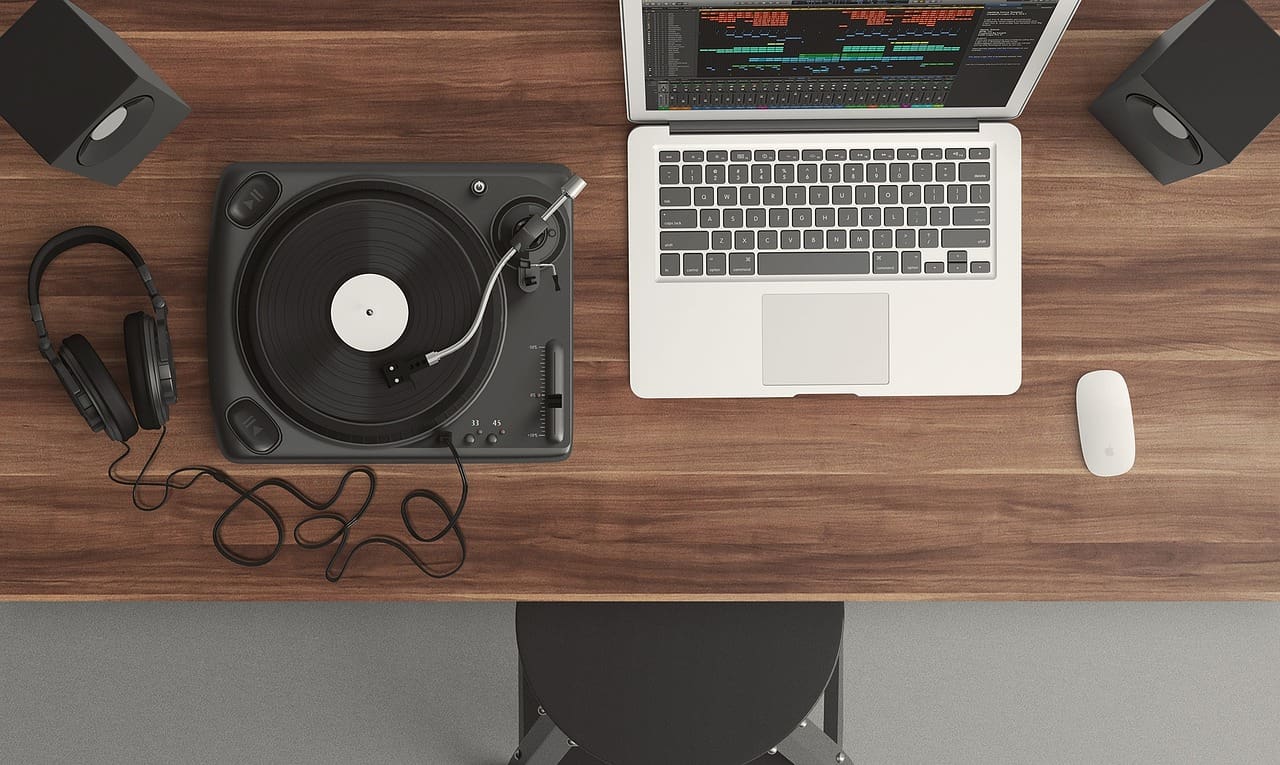
Are you tired of feeling overwhelmed and stressed out in your workspace? It’s time to detoxify your workspace and boost your productivity! By creating a clean and organized environment, you can enhance your focus, reduce distractions, and ultimately achieve more in less time. In this article, we will guide you through the process of detoxifying your workspace and provide you with practical tips to create a productive and stress-free work area.
Declutter Your Desk
Decluttering your desk is essential for creating a clean and focused work environment. By removing unnecessary items, you can reduce distractions and improve your productivity. Here are some tips to help you declutter your desk:
- Start by clearing everything off your desk and sorting items into categories.
- Get rid of any items that you no longer need or use. This includes old papers, broken office supplies, and outdated technology.
- Organize your desk essentials such as pens, notebooks, and sticky notes in designated containers or drawers.
- Create a filing system for important documents and store them in folders or binders.
- Consider using desk organizers or trays to keep small items like paper clips and USB drives neatly arranged.
Remember, a clutter-free desk not only improves your focus but also reduces stress. Take a few minutes each day to tidy up your workspace and maintain a clean and organized desk. You’ll be amazed at how much more productive and efficient you can be!
Create a Digital Organization System
Create a Digital Organization System
In today’s digital age, staying organized is crucial for productivity. With the vast amount of computer files and emails we deal with on a daily basis, it’s easy to feel overwhelmed and waste valuable time searching for important information. That’s why creating a digital organization system is essential to keep your workspace clutter-free and your mind focused.
Here are some tips to help you organize your computer files and emails effectively:
- Sort and Categorize Files: Start by creating folders and subfolders to categorize your digital files and documents. This will make it easier to locate specific files when you need them. Consider using clear and descriptive names for your folders to ensure easy identification.
- Use Productivity Tools: Explore the wide range of productivity tools and apps available to help streamline your workflow. These tools can assist you in organizing your files, setting reminders, and managing tasks efficiently. Find the ones that work best for your needs and integrate them into your digital organization system.
- Implement Email Filters: Email overload can be a major productivity killer. Take advantage of email filters to automatically sort and prioritize your emails. Set up filters based on senders, subjects, or keywords to ensure important emails are easily accessible and less important ones are filtered into specific folders.
By implementing these strategies, you can create a digital organization system that allows you to easily find what you need and stay productive. Remember, a clutter-free digital workspace leads to a clutter-free mind, enabling you to focus on your tasks and achieve optimal productivity.
Sort and Categorize Files
Sorting and categorizing files is essential for maintaining a well-organized digital workspace. By creating folders and subfolders, you can easily locate and access your files, saving valuable time and reducing stress. Here are some tips to help you effectively sort and categorize your files:
- Choose a Logical System: Before creating folders, decide on a logical system for organizing your files. This could be based on projects, clients, or categories that make sense for your work.
- Create Main Folders: Start by creating main folders that represent the broad categories of your work. For example, you could have folders for “Client Projects,” “Administrative Documents,” and “Reference Materials.”
- Use Subfolders: Within each main folder, create subfolders to further categorize your files. For instance, within the “Client Projects” folder, you could have subfolders for each client’s name or specific projects.
- Label Folders Clearly: Give each folder a clear and descriptive name that reflects its contents. This will make it easier to find specific files later on.
- Organize by Date: If relevant, consider organizing files by date. This can be particularly useful for time-sensitive projects or documents that need to be archived chronologically.
- Maintain Consistency: Stick to your chosen system and be consistent in how you organize your files. Avoid creating duplicate folders or scattering files across different locations.
By implementing a systematic approach to sorting and categorizing your files, you can significantly improve your productivity and efficiency. With a well-organized digital workspace, you’ll spend less time searching for files and more time focusing on your work.
Use Productivity Tools
When it comes to boosting productivity, using the right productivity tools and apps can make all the difference. These tools are designed to streamline your workflow, help you stay organized, and ultimately, increase your productivity levels. With a wide range of options available, it’s important to explore and find the tools that work best for you.
One of the most popular productivity tools is project management software. These tools allow you to create and manage tasks, set deadlines, and collaborate with team members. With features like task assignments, progress tracking, and file sharing, project management software can greatly improve your efficiency and keep you on track.
Another useful productivity tool is time tracking software. This tool allows you to monitor how you spend your time, helping you identify where you may be wasting valuable minutes or hours. By tracking your time, you can better prioritize tasks, allocate time for important projects, and eliminate time-wasting activities.
Email management tools are also essential for staying organized and productive. These tools help you manage your inbox more efficiently, allowing you to sort, categorize, and prioritize emails. With features like email filters, automated responses, and email scheduling, you can spend less time dealing with your inbox and more time focusing on important tasks.
For those who work on multiple projects or collaborate with others, file sharing and collaboration tools are a must. These tools allow you to store and share files in a centralized location, making it easy for team members to access and collaborate on documents. With real-time editing and commenting features, you can work together seamlessly, no matter where you are.
Finally, task management apps are great for keeping track of your to-do lists and staying organized. These apps allow you to create and manage tasks, set reminders, and track your progress. Whether you prefer a simple checklist-style app or a more robust task management tool, there are plenty of options to choose from.
By exploring and utilizing these productivity tools and apps, you can streamline your workflow, stay organized, and ultimately, boost your productivity levels. Remember, finding the right tools that work for you is key, so don’t be afraid to try out different options and see what works best for your unique work style and needs.
Implement Email Filters
Emails can quickly become overwhelming, especially when you receive a high volume of messages each day. However, by implementing email filters, you can regain control over your inbox and ensure that important messages are prioritized for efficient email management.
Setting up filters in your email client allows you to automatically sort incoming messages based on specific criteria. For example, you can create filters to direct emails from certain senders or with specific keywords to designated folders. This helps to declutter your inbox and ensures that you don’t miss important messages among the noise.
Additionally, email filters can be used to prioritize certain types of emails. For instance, you can create a filter that marks emails from your boss or key clients as high priority, ensuring that they stand out in your inbox and receive immediate attention.
By taking the time to set up email filters, you can streamline your email management process and focus on the most important tasks at hand. No longer will you waste time sifting through irrelevant emails or risk overlooking critical messages. With filters in place, you can stay organized, reduce stress, and boost your overall productivity.
Minimize Distractions
When it comes to maximizing productivity, minimizing distractions in your workspace is crucial. Distractions can disrupt your focus, decrease efficiency, and ultimately hinder your ability to get work done. By identifying and eliminating these distractions, you can create an environment that promotes concentration and productivity.
One effective way to minimize distractions is to remove any unnecessary items from your workspace. Clutter can be visually overwhelming and can create a sense of chaos, making it difficult to stay focused. Take a moment to declutter your desk and only keep the essentials within reach. This will help create a clean and organized space that allows you to concentrate on your tasks.
In addition to physical distractions, digital distractions can also be a major productivity killer. The constant pinging of notifications, the temptation to check social media, and the lure of endless browsing can all derail your focus. To combat this, consider implementing strategies to limit your exposure to these distractions.
- Turn off notifications on your phone and computer to minimize interruptions.
- Use website blockers or productivity apps that restrict access to distracting websites during work hours.
- Set specific times for checking emails and messages, rather than constantly being at the mercy of incoming notifications.
By proactively managing and minimizing distractions, you can create a workspace that fosters concentration and productivity. Remember, the goal is to create an environment that supports your work and allows you to stay focused on the task at hand.
Optimize Ergonomics
Optimizing ergonomics in your workspace is crucial for enhancing comfort and preventing discomfort or injuries. By making simple adjustments, you can create a workspace that promotes better posture and reduces strain on your body.
One of the key aspects of optimizing ergonomics is choosing the right chair and desk. Invest in a comfortable chair that provides adequate support for your back and promotes good posture. Look for an adjustable desk that allows you to set the height at a level that is comfortable for you. This will help you maintain proper alignment and reduce the risk of developing musculoskeletal issues.
Proper lighting is also essential for creating an ergonomic workspace. Ensure that your workspace has adequate lighting to reduce eye strain and improve focus. Position your desk near a window to take advantage of natural light, and use task lighting to illuminate your work area effectively.
Another aspect to consider is organizing cables and wires. Tangled and messy cables not only create a cluttered workspace but can also pose a tripping hazard. Use cable management solutions such as cable clips or cable sleeves to keep your cables organized and out of the way. This will not only improve the aesthetics of your workspace but also reduce the risk of accidents.
Remember, optimizing ergonomics is all about creating a workspace that supports your physical well-being. By making these adjustments, you can ensure that your workspace is comfortable, safe, and conducive to productivity.
Choose the Right Chair and Desk
When it comes to creating a productive workspace, choosing the right chair and desk is crucial. Investing in a comfortable chair and adjustable desk can significantly impact your posture and overall well-being. Sitting for long hours can lead to discomfort and strain, but with the right furniture, you can minimize these issues.
A comfortable chair should provide adequate support for your back and promote good posture. Look for chairs with adjustable features such as height, armrests, and lumbar support. These adjustments allow you to customize the chair to your specific needs, ensuring that you maintain a healthy sitting position throughout the day.
An adjustable desk is equally important in promoting a healthy workspace. It allows you to switch between sitting and standing positions, reducing the strain on your back and neck. Standing desks have become increasingly popular due to their ability to improve blood circulation and increase energy levels. Consider investing in a height-adjustable desk that allows you to effortlessly transition between sitting and standing.
In addition to comfort and adjustability, it’s essential to consider the size and layout of your workspace. Ensure that your desk provides enough surface area for all your work essentials, such as your computer, keyboard, and other accessories. A clutter-free workspace promotes focus and productivity, so choose a desk with built-in storage or consider adding organizers to keep your items neatly arranged.
Remember, your chair and desk are the foundation of your workspace, and investing in high-quality, ergonomic options will pay off in the long run. Prioritize your comfort and well-being by choosing furniture that promotes good posture, reduces strain, and allows you to work efficiently for extended periods.
Set Up Proper Lighting
Proper lighting in your workspace is crucial for creating a productive and comfortable environment. By ensuring that your workspace has adequate lighting, you can reduce eye strain and improve your focus. Here are some tips to help you set up proper lighting in your workspace:
- Choose the right light source: Natural light is the best option for your workspace. Position your desk near a window to maximize the amount of natural light you receive. If natural light is limited, consider using a desk lamp with a daylight bulb to mimic natural light.
- Avoid glare: Glare from your computer screen or overhead lights can strain your eyes. Position your computer screen perpendicular to windows to minimize glare. If you have overhead lights, use shades or diffusers to soften the light.
- Adjust brightness: The brightness of your workspace should be comfortable for your eyes. Avoid working in a dimly lit room as it can cause eye strain. Adjust the brightness of your computer screen to a level that is comfortable for you.
- Consider task lighting: Task lighting, such as a desk lamp, can provide focused lighting for specific tasks. Position the lamp so that it illuminates your work area without causing shadows or glare.
By following these tips, you can ensure that your workspace has proper lighting, which will help reduce eye strain and improve your focus. Remember, a well-lit workspace is essential for maintaining productivity and overall well-being.
Organize Cables and Wires
Organizing cables and wires is an essential step in creating a clean and organized workspace. Not only does it improve the overall appearance of your workspace, but it also helps in boosting productivity. Tangled cables and wires can be a major distraction and can even pose a safety hazard. By tidying up your workspace and managing your cables and wires effectively, you can create a more efficient and focused work environment.
Here are some tips to help you organize cables and wires in your workspace:
- Use cable clips or cable management sleeves to keep cables neatly bundled together. This not only prevents them from getting tangled but also makes it easier to identify and access specific cables when needed.
- Label your cables using cable tags or labels. This will help you quickly identify which cable belongs to which device, saving you time and frustration.
- Consider using cable management solutions such as cable trays or cable raceways. These can be mounted under your desk or along the walls to hide and route cables, keeping them out of sight and minimizing clutter.
- Invest in wireless devices whenever possible. This eliminates the need for cables and wires altogether, reducing the amount of clutter on your desk.
By implementing these cable organization strategies, you can create a clean and organized workspace that not only looks visually appealing but also promotes productivity and reduces stress. Remember, a clutter-free workspace leads to a clutter-free mind, allowing you to focus on your work and accomplish tasks more efficiently.
Frequently Asked Questions
- How can decluttering my desk improve productivity?
Decluttering your desk removes distractions and allows you to focus on the task at hand. A clean workspace promotes a clear mind and reduces stress, leading to increased productivity.
- What are some tips for creating a digital organization system?
To create a digital organization system, you can start by sorting and categorizing your files into folders and subfolders. This helps you easily locate and retrieve important documents. Additionally, consider using productivity tools and apps to streamline your workflow and implement email filters to efficiently manage your inbox.
- How can I minimize distractions in my workspace?
Identifying and eliminating distractions is crucial for maintaining focus. Some strategies include turning off notifications on your phone, closing unnecessary tabs on your computer, and establishing clear boundaries with colleagues. Creating a designated workspace away from high-traffic areas can also help reduce distractions.
- Why is ergonomic optimization important for my workspace?
Ergonomic optimization ensures that your workspace is comfortable and supports your physical well-being. By choosing the right chair and desk, setting up proper lighting, and organizing cables and wires, you can prevent discomfort and injuries, allowing you to work more efficiently and with fewer distractions.
- What are the benefits of investing in a comfortable chair and adjustable desk?
A comfortable chair and adjustable desk promote good posture, reduce strain on your body, and enhance overall comfort. This can prevent back and neck pain, improve blood circulation, and increase productivity by allowing you to work in a position that suits your individual needs.
- How does proper lighting in my workspace affect productivity?
Adequate lighting in your workspace reduces eye strain and fatigue, which can lead to increased focus and productivity. Natural light is ideal, but if that’s not possible, opt for bright, cool-toned LED lights that mimic daylight. Avoid harsh glares or shadows on your work surface.
- Why is organizing cables and wires important?
Organizing cables and wires not only improves the aesthetics of your workspace but also reduces the risk of accidents and tripping hazards. By using cable management solutions such as cable clips or cable sleeves, you can keep your workspace tidy and ensure easy access to your electronic devices.







Leave a Reply